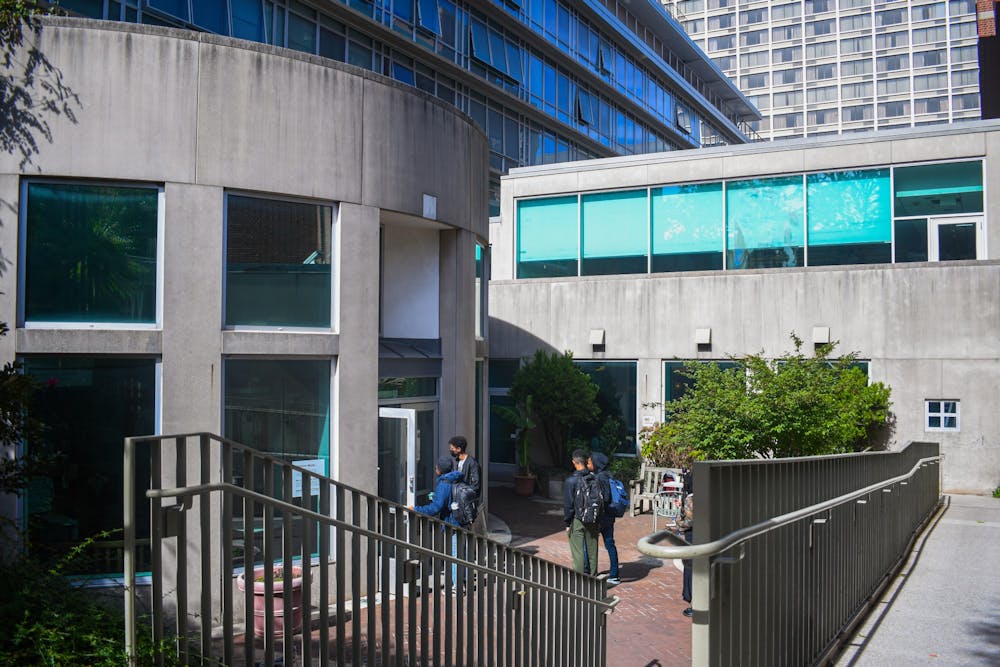
For Penn undergraduates living on campus, program communities are an option to connect with students who share similar interests.
Program communities, a category that includes Student Designed Communities and Course Communities, allow groups of students in the same program to reside on the same floor of a dormitory. These communities encapsulate themes from “Perspectives in Humanities” to “Women in Computer Science.” In order to participate, students must fill out an additional part of the on-campus housing application and are accepted with varying levels of selectivity, depending on the program.
Course Communities comprise two different categories: Penn Course Communities, which encompass a full academic program and often a specific degree, and College House Course Communities, which generally offer course credit in conjunction with a living-learning community on a designated residential floor. Popular Penn Course Communities include the Huntsman Program in International Studies and Business and the Jerome Fisher Program in Management and Technology.
College first year and member of the Casa Hispanica program — one of the College House Course Communities — Erika Kishino is an intermediate Spanish speaker. According to the CHAS website, the Casa Hispanica community is a part of the Modern Languages Program, based in Gregory College House, and helps students of varying fluency levels develop their proficiency in Chinese, French, German, or Spanish.
“I think one thing that’s good is that you get to know other people in your college house,” Kishino said. “And in the Spanish house, there aren’t that many people fully enrolled that come every time, so we get to know them pretty well.”
Although the French language component of the Modern Languages Program, Maison Française, is not offering a credit option this semester, College first year and program member Sergio Carballido appreciates the level of immersion the program offers.
“I think students could have a really good experience in belonging to these types of programs, especially because it allows them to practice more language,” Carballido said. “I think that, in general, something I’ve noticed the language courses here [at] Penn are missing is speaking practice.”
Miraya Gesheva, a College first year, is a member of the Film Culture Program in Gregory College House, and is opting to take two half credits over two semesters. Both Kishino and Gesheva noted that while there is a core group of people who are consistently involved with the program community, students who are not official members can also participate in its activities.
“When I go — because I’ve been to a couple [movie screenings] — I see familiar faces that go to many films, but there are random people as well,” Gesheva said. “It’s not binding if you’re not taking the half credit.”
Student Designed Communities are also an option for upperclassmen to facilitate existing connections and create new ones. Applications for SDCs are accepted annually, according to CHAS.
The East Asian Media & Culture program, located on the fifth floor of Lauder College House, was created by a pre-existing group of friends.
“We decided to start this cultural community because most of us kind of relate to it, and we all have some background in East Asian culture,” College sophomore and EAMC founding member Ben Lin said.
Lin cited a greater degree of freedom in event planning and budget allocation as benefits of having a student-led community as opposed to one organized by CHAS and faculty, but added that the freedom has some drawbacks.
“I think it definitely took a little bit more time [to be organized], being completely student-run,” Lin said. “But we have some people who stepped up and are taking charge.”
Lin and Carballido agreed that the events hosted by program communities would benefit from increased advertisement in order to attract students with similar interests.
“The [hardest] thing is to make people know about the program and make them do the first step of going there,” Carballido said.
The Daily Pennsylvanian is an independent, student-run newspaper. Please consider making a donation to support the coverage that shapes the University. Your generosity ensures a future of strong journalism at Penn.
Donate







